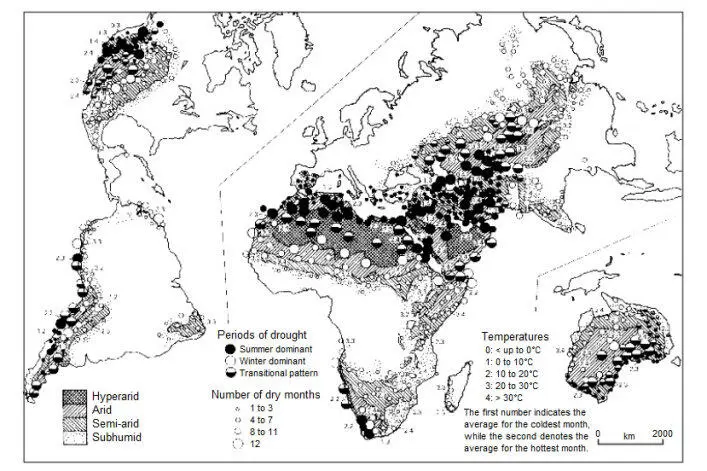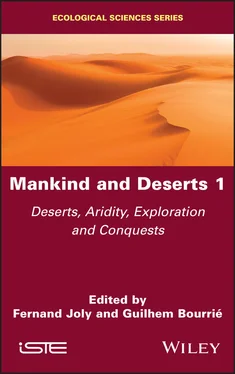Mankind and Deserts 1
Здесь есть возможность читать онлайн «Mankind and Deserts 1» — ознакомительный отрывок электронной книги совершенно бесплатно, а после прочтения отрывка купить полную версию. В некоторых случаях можно слушать аудио, скачать через торрент в формате fb2 и присутствует краткое содержание. Жанр: unrecognised, на английском языке. Описание произведения, (предисловие) а так же отзывы посетителей доступны на портале библиотеки ЛибКат.
- Название:Mankind and Deserts 1
- Автор:
- Жанр:
- Год:неизвестен
- ISBN:нет данных
- Рейтинг книги:4 / 5. Голосов: 1
-
Избранное:Добавить в избранное
- Отзывы:
-
Ваша оценка:
- 80
- 1
- 2
- 3
- 4
- 5
Mankind and Deserts 1: краткое содержание, описание и аннотация
Предлагаем к чтению аннотацию, описание, краткое содержание или предисловие (зависит от того, что написал сам автор книги «Mankind and Deserts 1»). Если вы не нашли необходимую информацию о книге — напишите в комментариях, мы постараемся отыскать её.
Mankind and Deserts 1 — читать онлайн ознакомительный отрывок
Ниже представлен текст книги, разбитый по страницам. Система сохранения места последней прочитанной страницы, позволяет с удобством читать онлайн бесплатно книгу «Mankind and Deserts 1», без необходимости каждый раз заново искать на чём Вы остановились. Поставьте закладку, и сможете в любой момент перейти на страницу, на которой закончили чтение.
Интервал:
Закладка:
4) the wind (see Volume 3, Chapters 1and 2) is omnipresent and especially strong in the desert. All along its complex paths it lifts up, transports and deposits sands and dust;
5) and finally, an essential factor is that of space, which contains all the other factors. There is, first of all, the large expanse, an inordinately vast area in some deserts. Then there is also the bareness of the biological environment. The relief forms, which depend on unique legacies which, to greater and lesser extents, are ancient. Finally, you have the inhabitants, both sedentary and nomadic, who have, over the centuries, been able to construct and maintain a veritable “desert civilization” (see Volume 3, Chapter 3).
Over the course of these volumes, we will examine these five basic factors in detail. However, we begin with an overview of the history of our exploration of the deserts.
1.4. Deserts of the world
If it is not easy to define a desert , it is even harder to establish its boundaries. Most often, we see a progressive transition from the humid to the arid and then onto the desertic. These nuances are themselves limited by fuzzy boundaries, with capes, islands and enclaves that change with seasons and the passing of the years. We can ascribe certain properties to them that are more or less measurable: climatic (the abundance of rain, indicators of aridity), hydrological (density of drainage, flow indices, endorheism, arheism), biological (plant cover, composition of the flora, adaptation to dry conditions, endemism 9 ), morphological (relief, geodynamic systems) or even economic (presence or absence of cultivation, the need to use irrigation). Each of these arguments or criteria is both valid and disputable, but they are only truly meaningful when combined with the others in an overall network of interdependencies that make up the desert ecosystem.
Thus, citing a specific figure for the area covered by deserts around the world is both an illusory and approximate exercise. This being said, we can broadly say that deserts (in the broadest sense) cover about a third of the area made up by the continents, without taking into account frozen deserts. They are distributed across the globe in inter-tropical and temperate regions, along three basic axes (Figure 1.1):
1) the Afro-Asiatic Eremic diagonal 10 that includes the Sahara and the deserts in Asia;
2) the North and South American Eremic diagonals;
3) the isolated deserts in the Southern Hemisphere: Northeast Brazil, South Africa, Madagascar and Australia.

Figure 1.1. Arid regions around the world as per (Meigs 1977–1979), modified
How can it be that, in the age of air travel, widespread tourism, television and the Internet, we still so often have such a fuzzy, conventional and mythical image of the deserts? There has certainly been progress in gaining direct knowledge of the deserts, but this knowledge itself has spread very slowly and imperfectly to non-desert regions. The difficulties around entering and traveling through the desert can be blamed for this slow dissemination, as well as the risks inherent to these regions. Man has traveled across the deserts for centuries out of necessity and as a result of certain events (military, political or economic), rather than through a desire to discover or gain knowledge. The merchants and travelers would follow linear paths marked by water points. They would rarely deviate from these paths, for fear of losing themselves and dying in the desert. Modern automobiles (not counting those used in the rallies) can cover in one hour the distance that a camel would take a day to travel. Those who make these journeys today do so at a speed that allows them to grasp only the most superficial of information. Views from planes or satellite images are always difficult to decipher. Tourists, reporters and artists, who are very demanding, prefer the picturesque or sensational over banal reality. There is an increasing number of scientists in this field, but they have a very limited audience. For all of these reasons, the image that the public receives of the desert is partial and varies widely depending on the source. The varying levels of reliability of the information and the unequal distribution of this knowledge go a great way toward explaining the obscurity, mystery and legends that deserts are veiled in even today.
1.5. To know more
Birot, P. (1970). Les régions naturelles du globe . Paris: Masson.
Chenu, R. (1997). Le désert — Petite anthologie . Paris: CERF, 129 p.
CRISM, ed. (2000). Figures — Le désert . Cahiers du Centre de Recherches sur l’Image, le Symbole et le Mythe, Université de Dijon, 167 p.
Cuny, H. (1961). Les déserts dans le monde . Paris: Payot.
Demangeot, J. and Bernus E. (2001). Les milieux désertiques . Paris: Armand Colin. Doucey, B., ed. (2006). Le livre des déserts . Collection Bouquins. Paris: Robert Laffont, 1231 p.
Dresch, J. (1966). “La zone aride, Géographie générale.” In Encyclopédie de la Pléiade. Paris: Gallimard, pp. 712–780.
— (1982). Géographie des régions arides . Collection Le Géographe. Paris: Presses Universitaires de France. 277 pp.
Haudricourt, A. and Hédin L. (1943). L’homme et les plantes cultivées . Géographie humaine. Paris: Gallimard. 233 pp.
Hills, E.S., ed. (1966). Arid lands, a geographical appraisal . Paris, London, UNESCO, Methuen & Co. 461 pp.
Joly, F. (1957). “Les milieux arides— Définition— Extension.” In Notes marocaines, Rabat 8, pp. 15–30.
Mc Ginnies, W., Goldman, B. and Paylore P. (1968). Deserts of the world — An appraisal of research into their physical and biological environments . University of Arizona Press. 788 pp.
Meigs, P., ed. (1977–1979). Carte de la répartition mondiale des régions arides, Carte à 1/25 000 000, 1 feuille en couleurs, Notice explicative . Notes techniques Man and Biosphere 7. Paris: UNESCO. 55 pp.
Monod, T. (1937). Méharées. Explorations au vrai Sahara . Bibliothèque des voyages. Paris: Je sers. 300 pp.
— (1973). Les déserts . Paris: Horizons de France.
Petit-Maire, N. (1984). “Le Sahara, de la steppe au désert.” In La Recherche 160, pp. 1372–1382.
Petrov, M. (1976). Deserts of the world, New York: John Wiley & Sons Ltd. de Planhol, X. and Rognon , P. (1970). Les zones tropicales arides et subtropicales .
Paris: Armand Colin. 487 pp.
Pouquet, J. (1951). Les déserts . Que-sais-je ? 500. Paris: Presses Universitaires de France.
Sorre, M. (1943). Les fondements biologiques de la géographie humaine — Essai d’une écologie de l’homme . Paris: Armand Colin.
UNESCO, ed. (1962). Les problèmes de la zone aride — Actes du colloque de Paris . — ed. (1995). Les zones arides dans les programmes de l’UNESCO . Paris: UNESCO.
Chapter written by Fernand JOLY.
1 1Editor’s note: The Port-Royal-des-Champs Convent, south of Paris, was, in the mid-17th Century, home to a strict and ascetic religious order (Jansenism) whose teaching focused on Original Sin and condemned involvement in any “worldly” activity.
2 2Translator’s note: In French, desert is also used for “wilderness”.
3 3Editor’s note: Fénelon, a 17th Century archbishop of Cambrai – a city in the north of France – was renowned for his eloquence. He was a champion of women’s education, an uncommon stance in those times.
Читать дальшеИнтервал:
Закладка:
Похожие книги на «Mankind and Deserts 1»
Представляем Вашему вниманию похожие книги на «Mankind and Deserts 1» списком для выбора. Мы отобрали схожую по названию и смыслу литературу в надежде предоставить читателям больше вариантов отыскать новые, интересные, ещё непрочитанные произведения.
Обсуждение, отзывы о книге «Mankind and Deserts 1» и просто собственные мнения читателей. Оставьте ваши комментарии, напишите, что Вы думаете о произведении, его смысле или главных героях. Укажите что конкретно понравилось, а что нет, и почему Вы так считаете.











